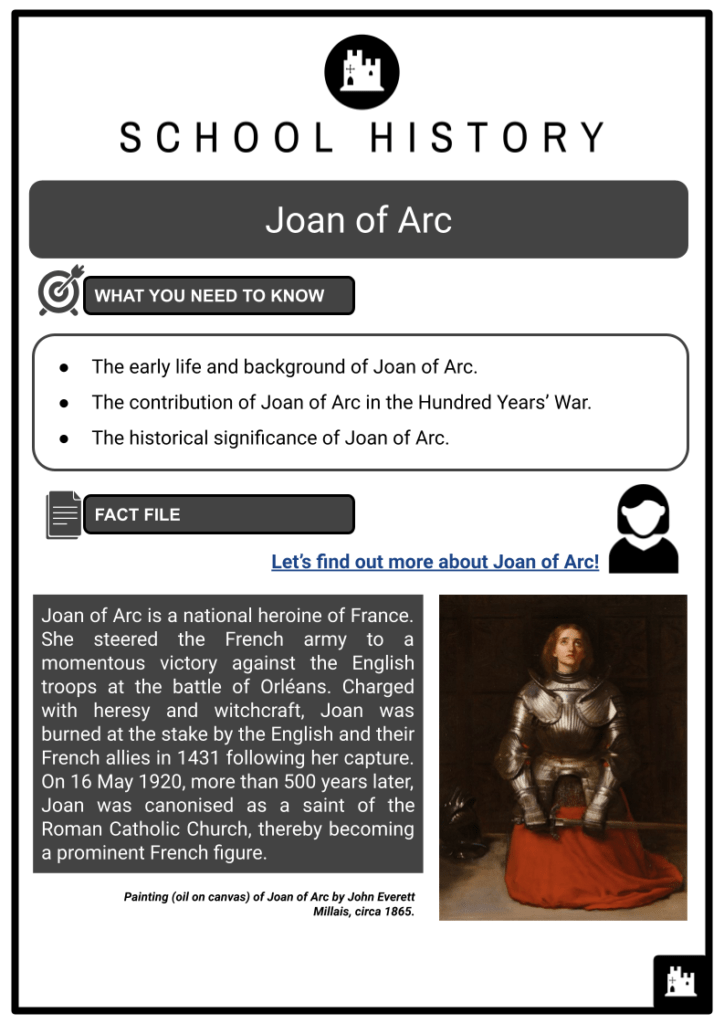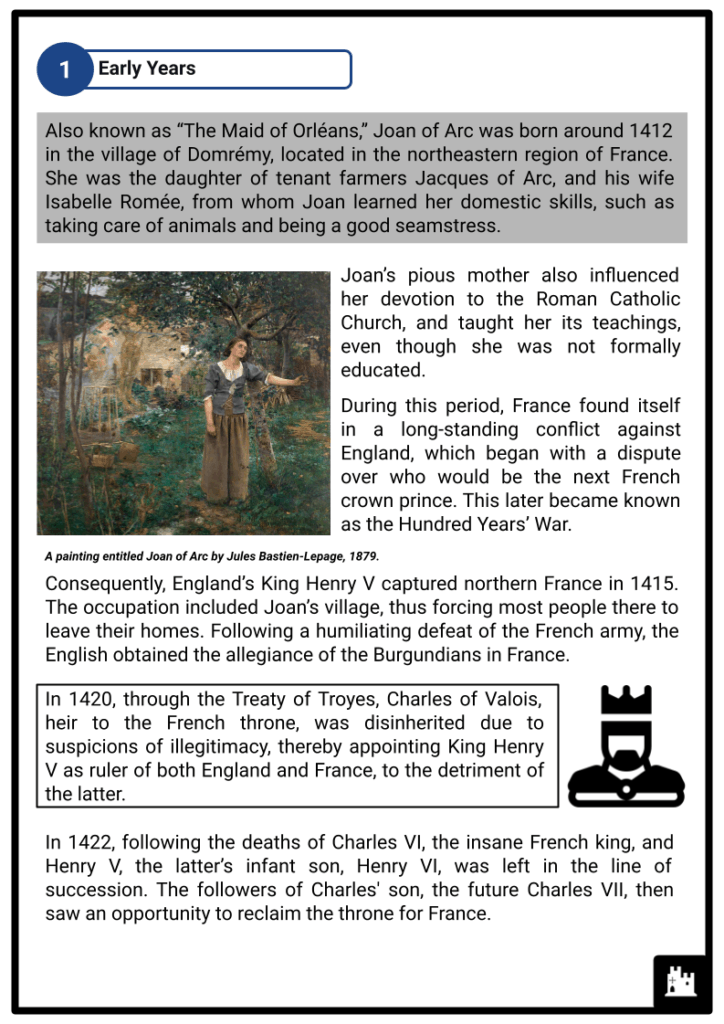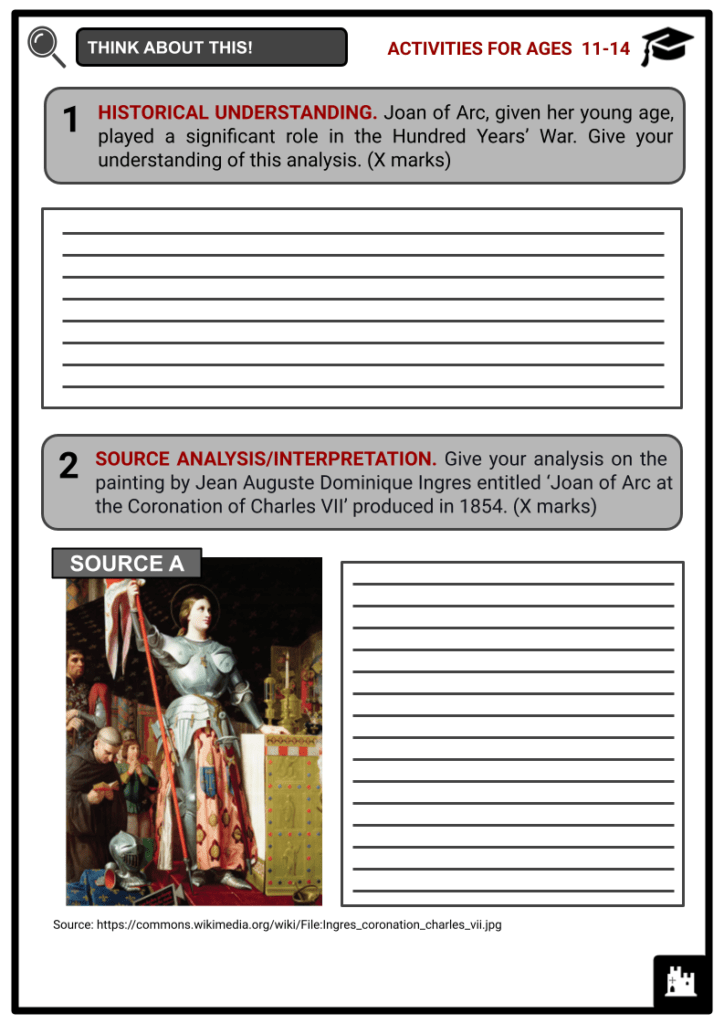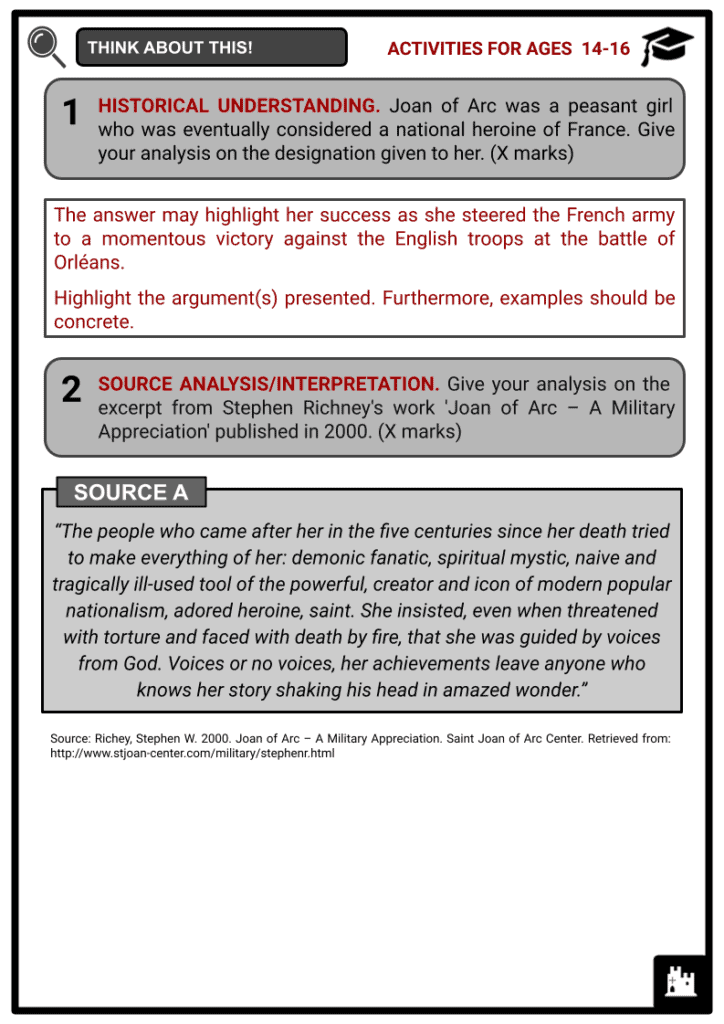Download Joan of Arc Worksheets
Do you want to save dozens of hours in time? Get your evenings and weekends back? Be able to teach Joan of Arc to your students?
Our worksheet bundle includes a fact file and printable worksheets and student activities. Perfect for both the classroom and homeschooling!
Table of Contents
Add a header to begin generating the table of contents
Summary
- The early life and background of Joan of Arc.
- The contribution of Joan of Arc in the Hundred Years’ War.
- The historical significance of Joan of Arc.
Key Facts And Information
Let’s know more about Joan of Arc!
- Joan of Arc is a national heroine of France. She steered the French army to a momentous victory against the English troops at the battle of Orléans. Charged with heresy and witchcraft, Joan was burned at the stake by the English and their French allies in 1431 following her capture. On 16 May 1920, more than 500 years later, Joan was canonised as a saint of the Roman Catholic Church, thereby becoming a prominent French figure.
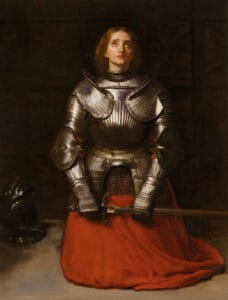
Early Years
- Also known as “The Maid of Orléans,” Joan of Arc was born around 1412 in the village of Domrémy, located in the northeastern region of France. She was the daughter of tenant farmers Jacques of Arc, and his wife Isabelle Romée, from whom Joan learned her domestic skills, such as taking care of animals and being a good seamstress.
- Joan’s pious mother also influenced her devotion to the Roman Catholic Church, and taught her its teachings, even though she was not formally educated.
- During this period, France found itself in a long-standing conflict against England, which began with a dispute over who would be the next French crown prince. This later became known as the Hundred Years’ War.
- Consequently, England’s King Henry V captured northern France in 1415. The occupation included Joan’s village, thus forcing most people there to leave their homes. Following a humiliating defeat of the French army, the English obtained the allegiance of the Burgundians in France.
- In 1420, through the Treaty of Troyes, Charles of Valois, heir to the French throne, was disinherited due to suspicions of illegitimacy, thereby appointing King Henry V as ruler of both England and France, to the detriment of the latter.
- In 1422, following the deaths of Charles VI, the insane French king, and Henry V, the latter’s infant son, Henry VI, was left in the line of succession. The followers of Charles' son, the future Charles VII, then saw an opportunity to reclaim the throne for France.
- Around the same time, Joan of Arc, aged 13, began to receive mystical visions and spiritual voices, including that of St. Michael and St. Catherine, prompting her to follow a devout life.
- Believing that she was acting upon divine guidance, Joan embraced the mission of saving France by defeating its English enemies, and of placing Charles as the rightful heir to the French crown.
- Joan of Arc took a vow of maidenhood as part of her holy mission. In fact, at age 16, she managed to persuade a local court that she should not be obliged to take a marriage that her father had arranged for her.
Siege of Orléans
- In May 1428, Joan followed her visions and went to Vaucouleurs, a stronghold of Charles' loyalists, and made contact with Robert de Baudricourt, the garrison leader.
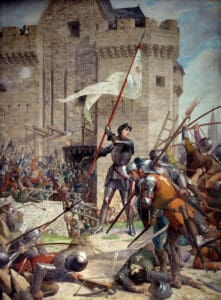
- After being initially denied by the local commander, Joan remained persistent, earning the support of a group of villagers, who followed a known prophecy that a virgin was destined to redeem France.
- Baudricourt finally caved in a year later, providing Joan with a horse and a band of military troops. Joan then shaved her head and dressed in men's clothing on a journey that lasted 11 days across enemy lines to Charles' court in Chinon.
- In Joan’s meeting with Charles, the latter was hesitant to believe that this girl, who sought an audience with him, could save France. But after Joan accurately pointed him out amid a gathering of his court members while in disguise, Charles trusted her.
- Still bothered by some doubts, Charles had notable theologians examine Joan, and the clergymen found nothing wrong with her.
- Following this, Charles, who already presumed the title Dauphin, which means heir to the throne, provided Joan with armour and a horse, permitting her to lead the French army to Orléans, which was under siege by the English.
- On 4 to 7 May 1429, French forces won possession of the English defences following a series of battles. Joan was injured, but she returned to the front to rally the troops for a final attack.
- The French had defeated the English by mid-June, as they drove the Anglo-Burgundians from their stronghold and forced them to pull back across the Loire River, the longest river in France.
- On 18 July 1429, Charles, along with his procession, gathered at Reims, the traditional place of the royal coronation in France, where he was crowned king and became known as Charles VII. Joan was also accompanying him during the ceremonies.
Final Years
- Joan was summoned to Compiègne by King Charles VII in the spring of 1430 to deal with the attack launched by the Burgundians. She was pushed off her horse and was left outside the town’s gates during the encounter.
- The Burgundians held Joan captive for months while negotiating with the English, who viewed her as an important piece of their propaganda. The English collaborators took Joan for 10,000 francs.
- Without any help from the crowned king, Joan was handed over to church leaders, despite her acts being against the English occupation forces. She was accused of many things, including witchcraft, heresy, and dressing in men’s clothes - 70 counts in total.
- From 21 February to 24 March 1431, Joan underwent trial, which went from public to private and she was questioned multiple times by a tribunal. She was then placed in a military prison, where she received threats of rape and torture.
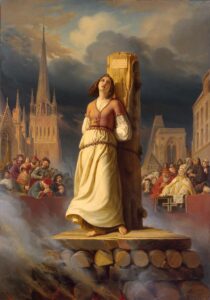
- On 29 May 1431, Joan of Arc was found guilty of heresy, according to the tribunal. The following morning she was delivered to a marketplace in Rouen. There, at age 19, she was burned at the stake in front of 10,000 people.
- The Hundred Years’ War lasted another 22 years following the death of Joan. King Charles VII remained at his throne and launched an investigation that resulted in Joan being pronounced legally innocent of all allegations and proclaimed a martyr in 1456.

